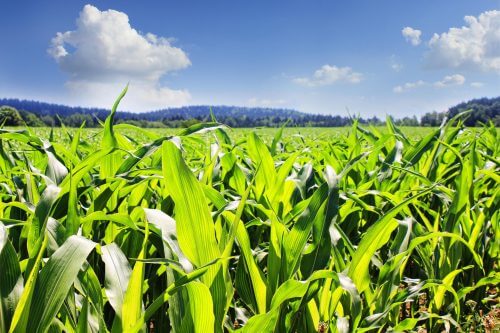Hot corn: Scientists at the University of Oulu in Finland managed to improve the efficiency of solar panels by seventeen percent, using a biomimetic coating.

By: Yael Halfman Cohen
The cost of solar panels is dropping significantly, but their efficiency is still low. Today, commercial solar panels convert only about twenty percent of the sun's energy into electricity. Solar energy is not yet a substitute for fossil fuels. One of the reasons for the low efficiency is the reflection of the light rays (reflectivity) of the surfaces. About thirty-five percent of the sunlight projected onto the panels is reflected back instead of being absorbed by the panels and undergoing a conversion process into electrical energy.
In the course of evolution, nature developed optimal solutions for harvesting solar energy. In an attempt to find a solution to the reflectivity challenge, a team of researchers from the University of Oulu in Finland turned to nature and studied the surface of leaves. The sample consisted of thirty-two different types of leaves. The goal was to identify which leaf absorbs the sun better. The winner is the corn. This fact may explain its rapid growth rate.
The team of researchers imitated the structure of the surface of the corn - protrusions at the 'nanometric' level, and designed a polymer coating, on which a similar pattern of dots (nanodots). This cover was placed on the silicon cells in the solar cells. The results were impressive - the researchers were able to reduce the percentage of light loss in return from thirty-five percent to twelve percent, and correspondingly, the energy harvesting in the solar panels increased by seventeen percent. The team also mimicked the surface of the corn on glass and silicon surfaces. This will make it possible to change the production method of the solar panels in the future.
The biomimetic 'nano coating' may have additional applications, for example, in the field of heating effectiveness in greenhouses. Reducing the reflectivity and increasing the exposure of the greenhouses to the sun will make it possible to reduce the additional heating required in the winter seasons - energy savings and a sustainable solution. The production method of the biomimetic 'nano-coatings' and the applications are 'patent protected'. Now the researchers are working on speeding up the development process with partners in China, and at the same time a company was established to commercialize the technologies.
To the source

3 תגובות
One of the (additional) problems with solar panels is the accumulation of dust on them, which causes a gradual and dramatic decrease in their efficiency. Doesn't adding a nanometer texture actually encourage dust accumulation? How do you clean this surface later effectively and without damaging the texture? Corn cobs should last a few months, these boards should last much longer. Shouldn't we go and look for a textured solution that also makes the board hydrophobic and prevents dirt from accumulating?
Error in the article...
Nissim, WD and Israel Shapira,
Yes, it is clear that at a low rotational speed the light can exit and return through the same slot, but if the wheel speed increases and the light already returns through another slot, then my description of the method of calculation is quite accurate, isn't it?